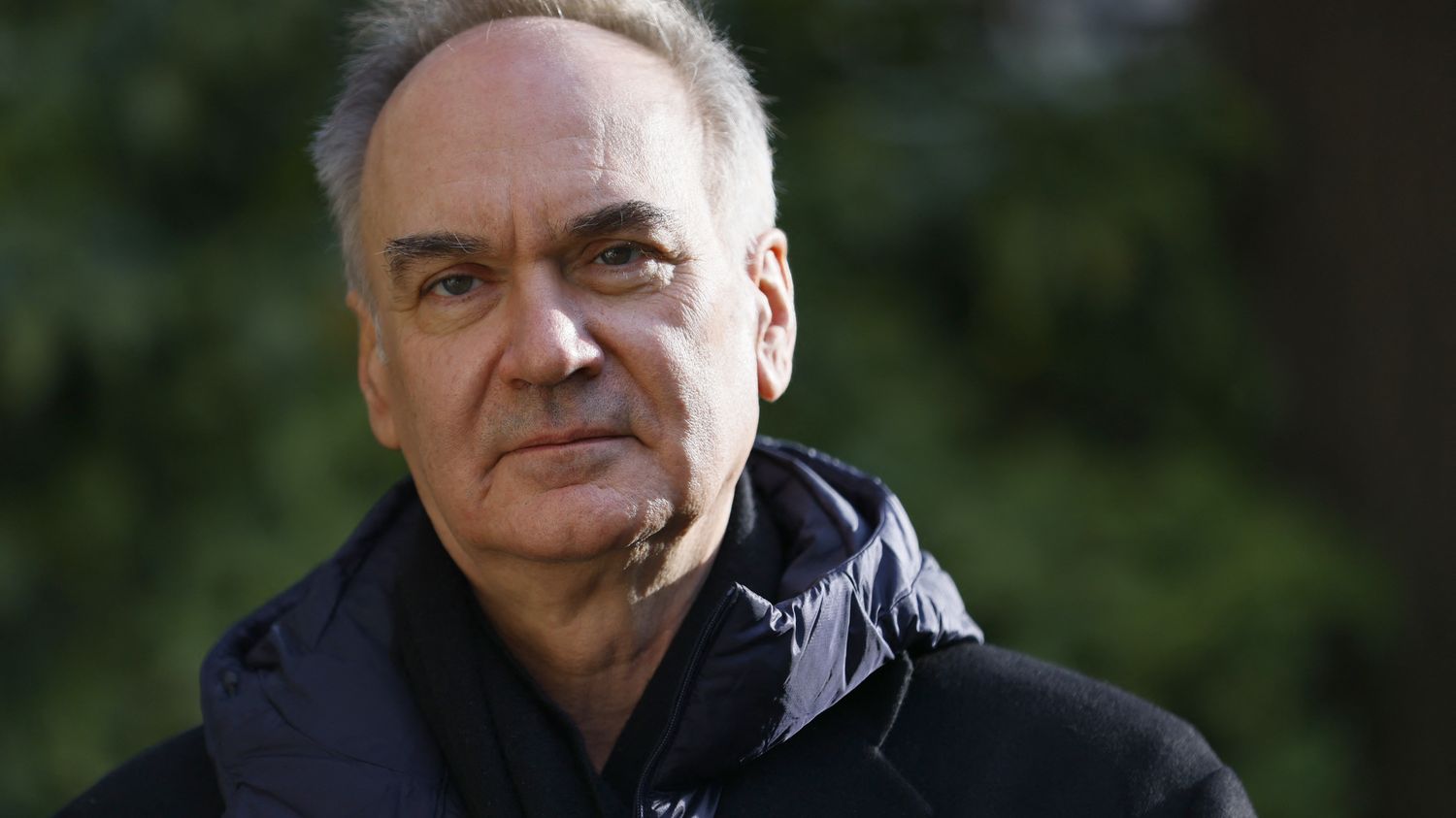Four years after “L’Anomalie” which won him the Prix Goncourt, Hervé Le Tellier returns with a documentary work around the Resistance. An investigation into André Chaix, who died during a German tank attack on August 22, 1944.

Published
Reading time: 4 mins

Far from the philosophical and scientific flights of The Anomaly, novel published in 2020 and second best-selling Prix Goncourt in history, Hervé le Tellier marks his return with The Name on the wall, published by Gallimard on April 18. The author delves into the life of a young resistance fighter, who died, as the commemorative plaques remind us, for France.
The story : Somewhere in Drôme Provençale, the narrator, who is none other than the author, buys a house which he wishes to make “his birthplace“. On one of the walls of the building is engraved the name “André Chaix”. Written in all capital letters, this surname is just an inscription like any other. Until the day when Hervé Le Tellier found it on a monument to the deaths He then seeks to reconstruct the life of this young man of whom he knows little. André Chaix was born in May 1924 and died in August 1944. Everything else has to be retraced.
From a small box given to the archives by André Chaix’s family, the author methodically traces the thread. Photos with jagged edges, letters to his fiancée, identity card, work certificate, leaflet from the Francs-tireurs et partisans, cigarette holder: Hervé Le Tellier proceeds in a documentary manner and refuses any fiction. A sort of investigation which only relies on tangible elements, The Name on the Wall is an encounter, a tribute to an unknown figure, a poetic tomb cobbled together with the help “dust of a life”.
Hervé Le Tellier introduces these few archives into the story. The reader discovers not only the life of André Chaix, but also his calligraphy, his way of speaking about love, his athletic body, and his face, his “actor’s head. Offered throughout the pages, the documents materialize the life of the young resistance fighter and manifest, around a simple writing, a real emotion. Because while being a rigorous investigation, The Name on the Wall is a sensitive, sometimes personal story. André Chaix’s story meets the narrator’s experience. It also allows us to traverse with a more human prism the events recounted by Hervé Le Tellier, shifts in eras and perspectives always chosen with precision.
Hervé Le Tellier brings archives and intimate elements into dialogue with historical and sociological analyses. The author delves into the history of Nazism and summons a multitude of anecdotes, sometimes going so far as to provoke laughter, from German cinema of the Second World War and its Titanic of propaganda to the very zealous military rallying of certain citizens who had nevertheless lived outside the Nazi regiment. Hervé Le Tellier looks back on the birth of the Third Reich, evokes the breeding ground of this regime and, in an always sincere gesture, makes the bridge with the contemporary era.
A portrait of a figure from the past, the work is also a manifesto for the present. This multi-toned story is eminently political, anchored in current times. “If it is written on the memorials that André, Célestin, and many others, are “died for France”, so these people lived against it, and so did those who followed them and perpetuated their obsessions.” states Hervé Le Tellier about the former French Nazis present at the founding of the ancestor of the National Rally. “Eighty years have passed since his death. But looking at the world as it is going, I have no doubt that we must always talk about the Occupation, collaboration and fascism, rejection of the other until ‘to destruction’, writes the author again. With The Name on the wall, Hervé Le Tellier signs a text imbued with great freedom, and, through wandering anecdotes, in turn traces his commitment.

Extract : “On the small village square, next to the bakery and a few meters from my house, there is a monument “in memory of the children of Montjoux who died for France”. The wars are far away, these deaths are forgotten and in these mornings of the strange spring of 2020 when the pandemic had suspended time, I must have passed by twenty times, loaded with bread and croissants, indifferent and in a hurry. One day in May, I think, a name caught my eye: CHAIX ANDRÉ (May 1924 – August 1944). The dates said it all: Chaix was a resistance fighter, a resistance fighter no doubt, a young man with a short life like many others.
I knew nothing about him, and several months passed without me considering him as the subject of a possible book. I asked questions, I collected fragments of a collective memory, I learned a little about who he was. In this investigation, a lot was given to me by luck, almost by miracle, and I quickly knew that I would like to tell André Chaix’s story. Without doubt, all lives are romantic. Some more than others.” (The Name on the Wallpages 13-14)
